Don’t worry, every US presidential inauguration looks a little bit fascist
Massive crowds, thousands of police officers at attention, a military parade, towering banners, and a wildly gesticulating commander in the middle of it all. As images of US president-elect Donald Trump’s inauguration dominate media today, it’s inevitable that someone will say, “Doesn’t that look a little fascist?!”
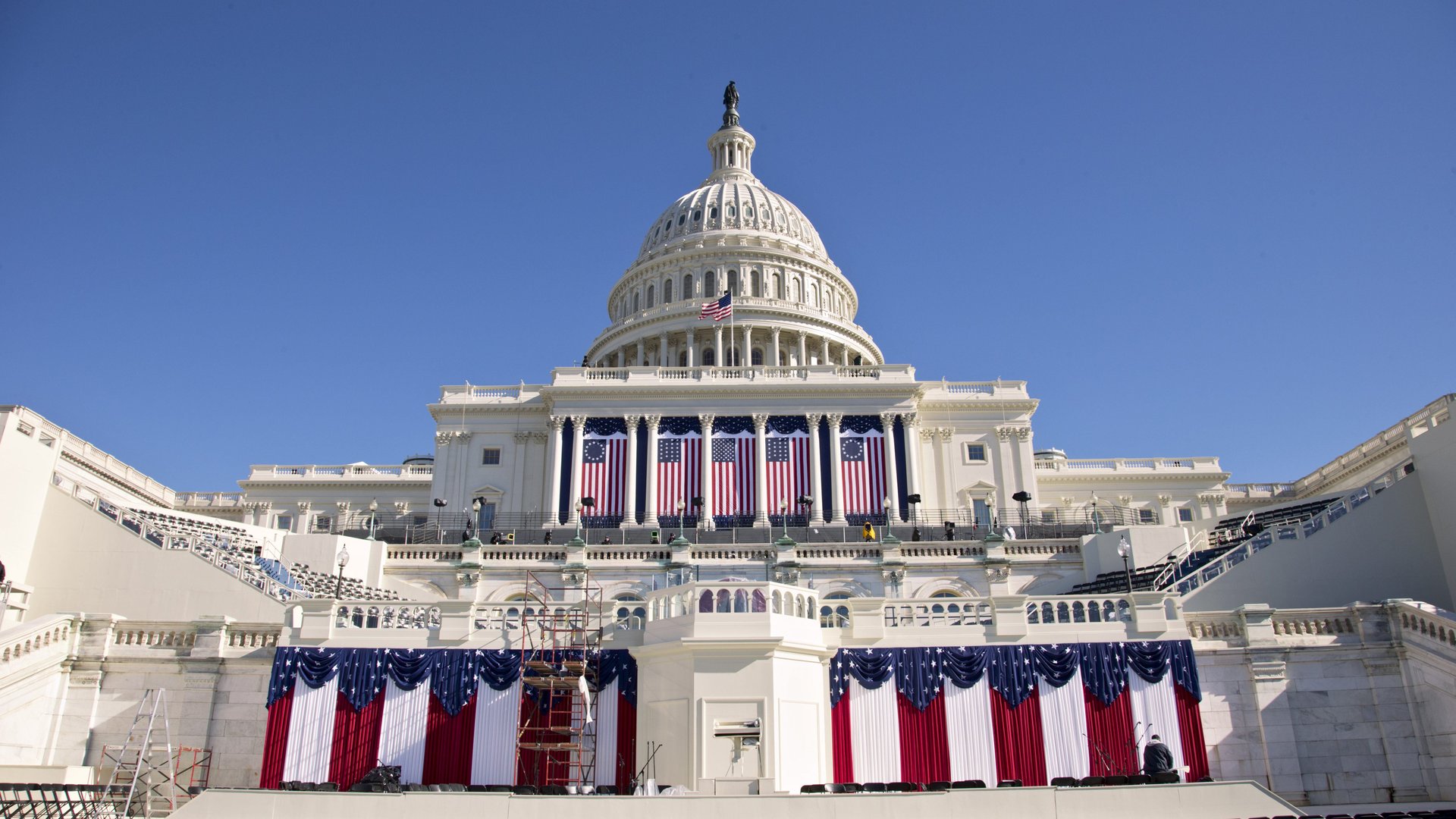

Massive crowds, thousands of police officers at attention, a military parade, towering banners, and a wildly gesticulating commander in the middle of it all. As images of US president-elect Donald Trump’s inauguration dominate media today, it’s inevitable that someone will say, “Doesn’t that look a little fascist?!”
Observers are right to note the uncanny resemblance between US political pageants and fascist spectacles of decades past. But it’s not all about Trump: Little has changed in the 188-year history of presidents sworn to office in front of the US Capitol. Presidential inaugurations in the US follow a long-established design template in staging, program and décor. The Nazis just perfected this choreography for mass media, creating recognizable framings and effects now copied by governments around the world.
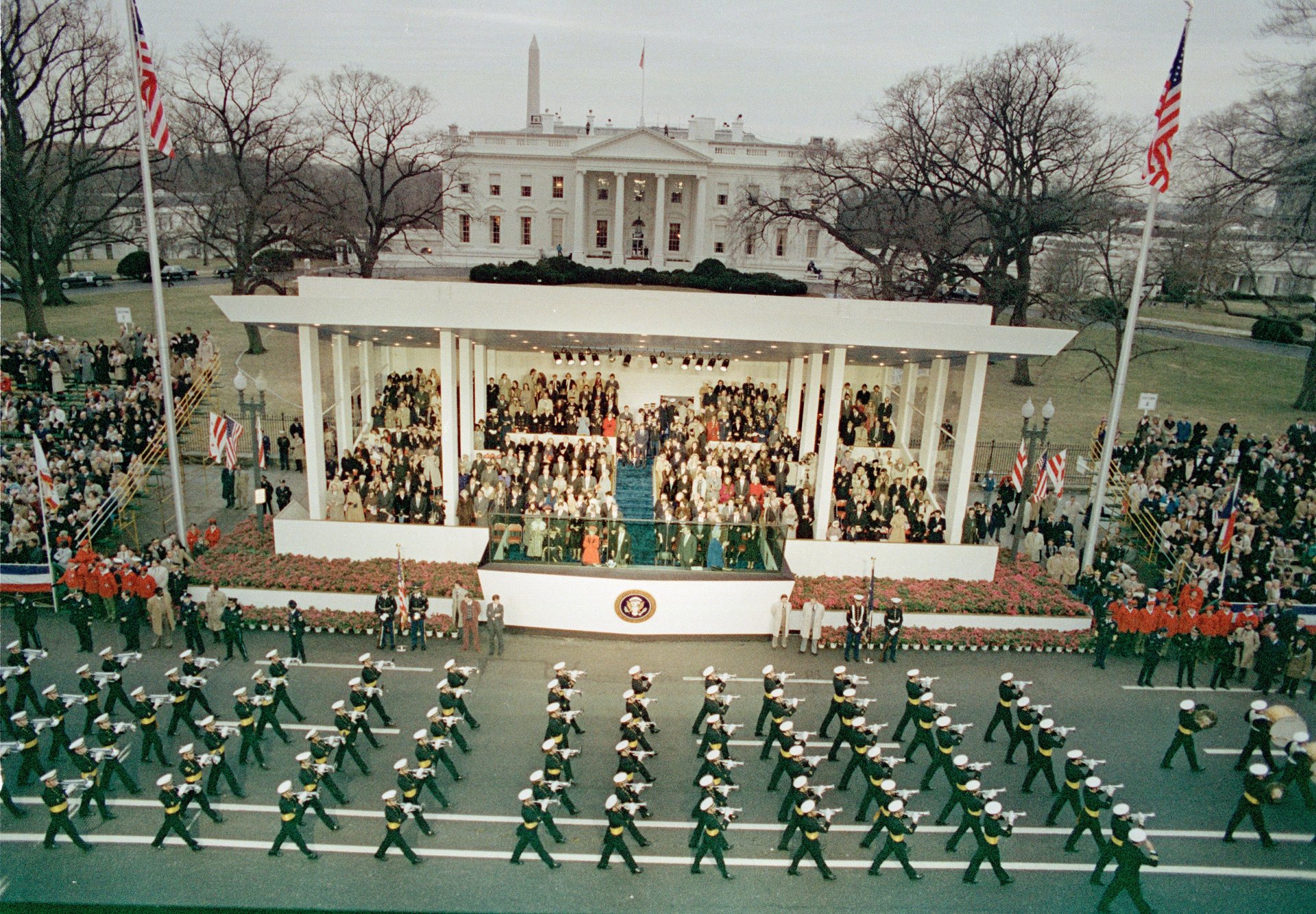
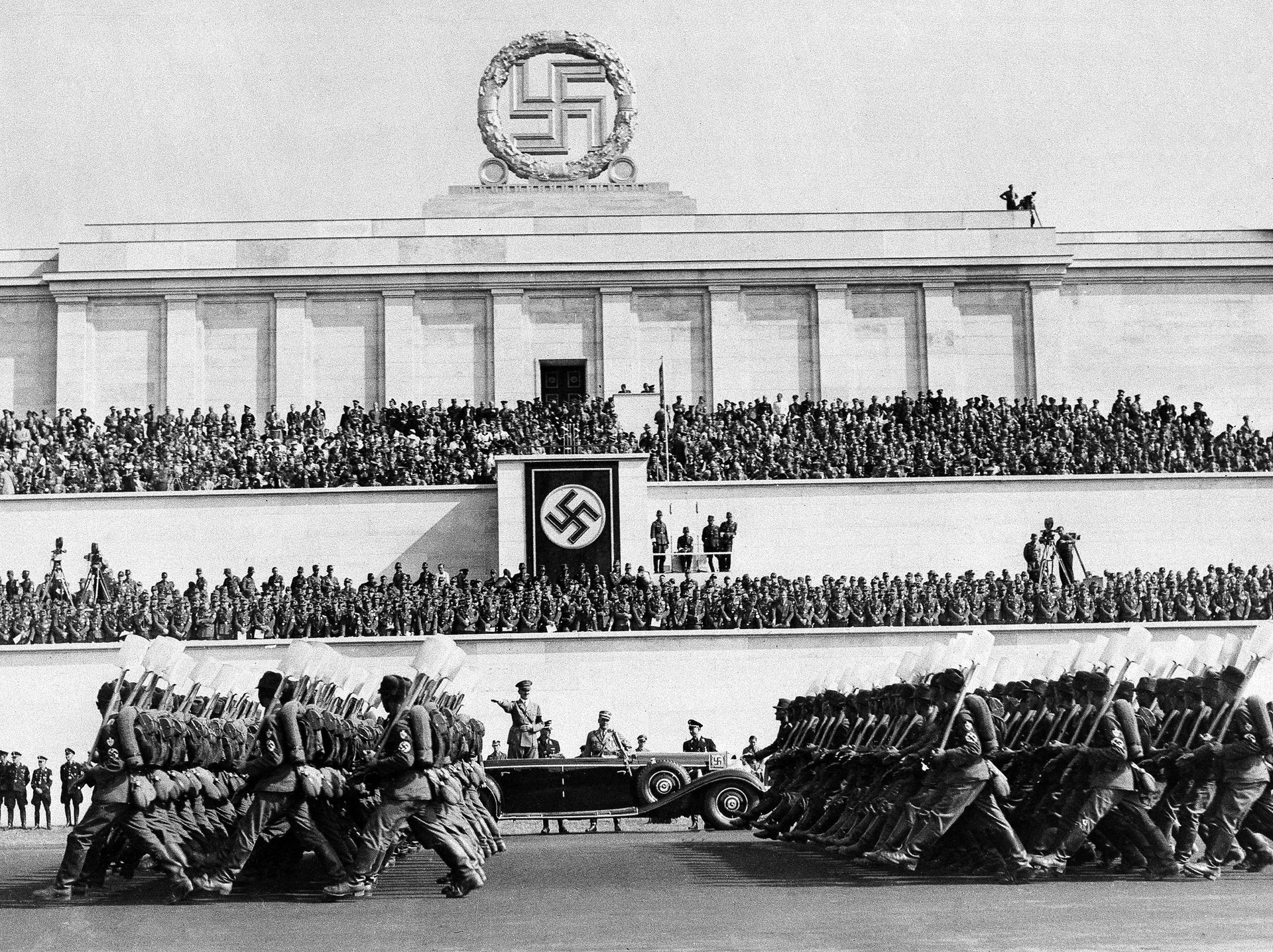
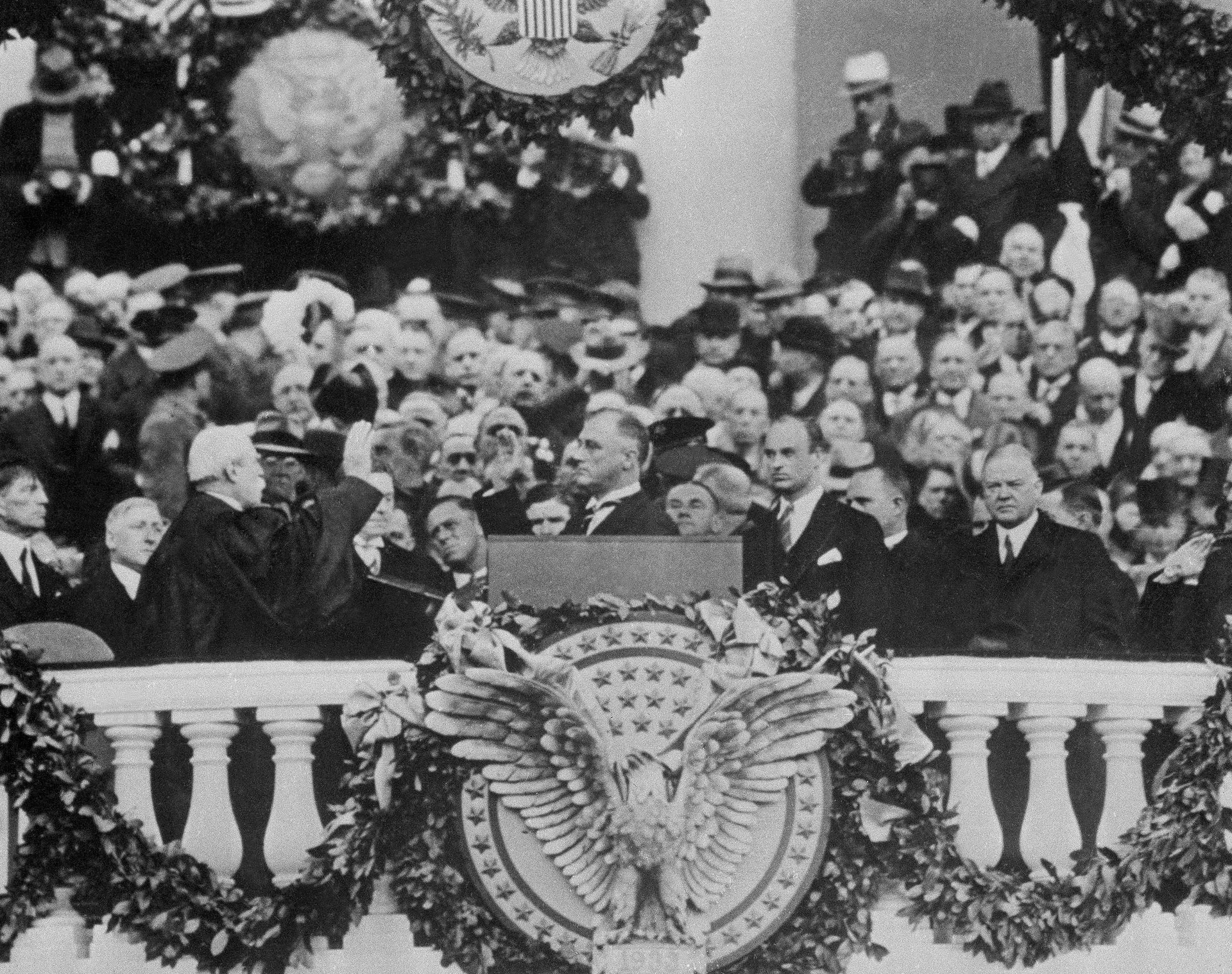
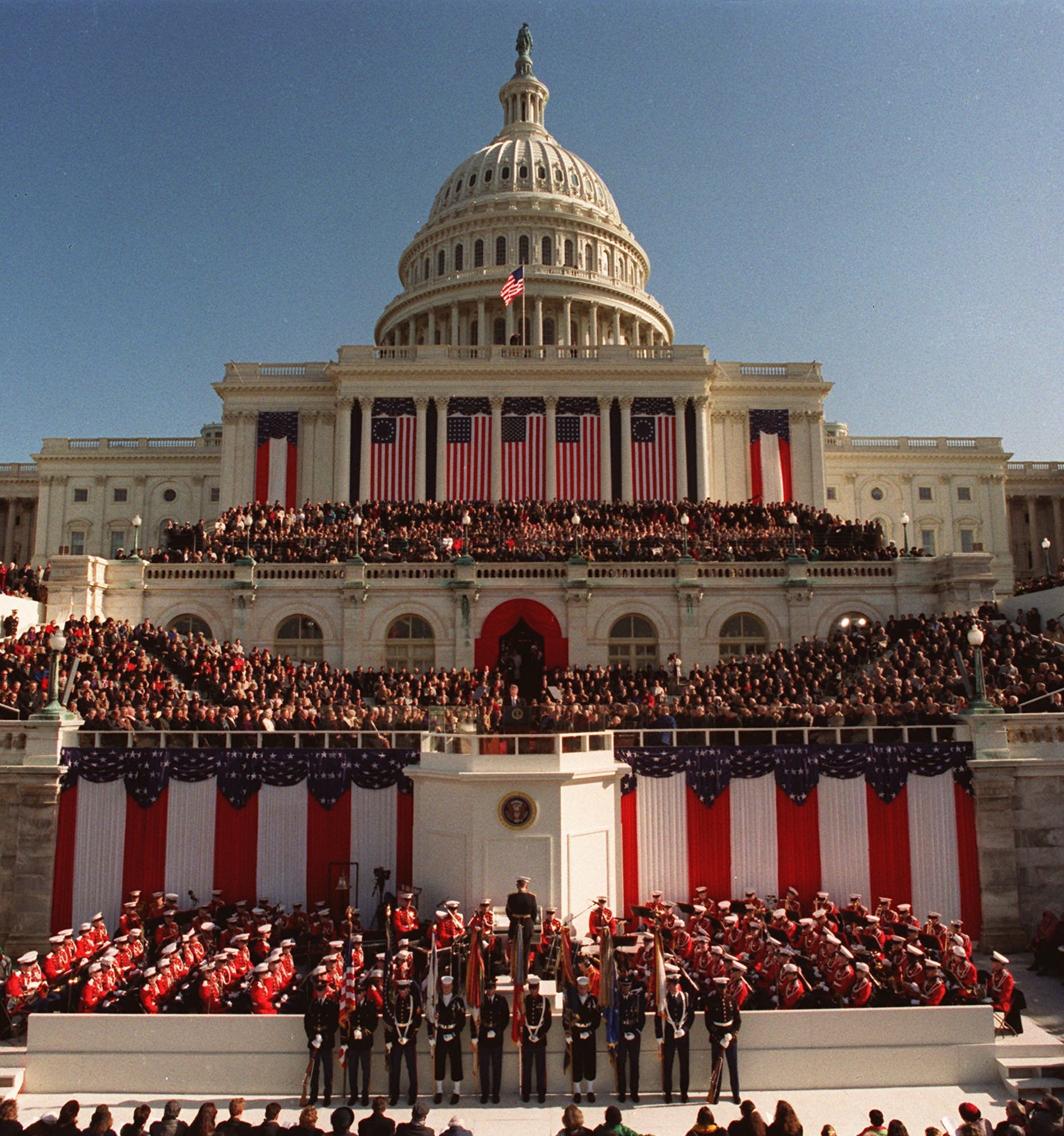

Design template for political pageants
“We’re going to have a very, very elegant day. The [January] 20th is going to be something that will be very, very special; very beautiful,” Trump said at his first press conference on Jan 11. “And I think we’re going to have massive crowds because we have a movement.” To live up to his promises, Trump tapped TV producer Mark Burnett, the mastermind behind blockbuster reality shows Survivor, The Voice, Shark Tank and The Apprentice, to help orchestrate his inauguration extravaganza.
The Nazis were among the first to figure out how to put on a good show for film and early television, designing many spectacles specifically for cameras, and engaging pro filmmakers like propaganda artist Leni Riefenstahl.
“What fascism did best was package it for cinema,” explains visual studies historian Karen Fiss, author of the book Grand Illusion: The Third Reich, the Paris Exposition, and the Cultural Seduction of France. For mass spectacles, they employed architects, lighting specialists, choreographers, sound engineers, graphic designers, and even a photographer who took reference pictures of Adolf Hitler rehearsing his hand gestures and facial expressions before a big speech.
Hitler knew that a strong performance meant greater influence. In her book Fiss quotes a French journalist who wrote that “it was not important whether Hitler was great as ‘Napoleon or Bismark, but that he was as powerful as Mr. Cecil B. De Mille,” citing the most influential Hollywood director of the silent film era.
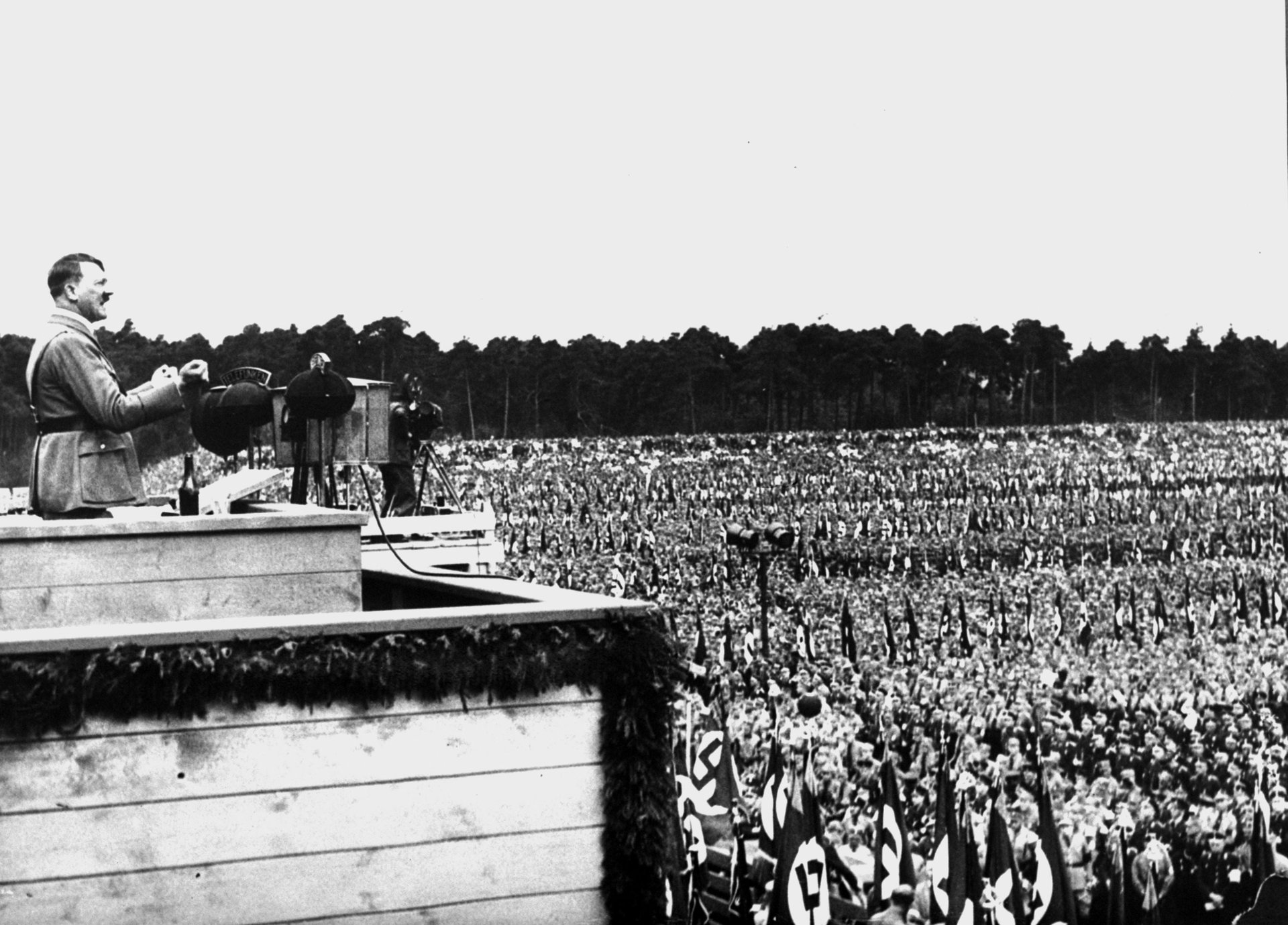
Of course Trump, the aspiring thespian who used celebrity to bolster his businesses, knows about the nitty-gritty of producing a reality show. When he heard that turnout for his big day may be lower than usual, his team bought targeted ads on Facebook to attract millennials to join the audience in Washington, DC. A big audience is essential for those sweeping birds-eye-view shots and emotive montages perfected by Riefenstahl.
Borrowed stage props
For those looking for similarities, there will be plenty of cues in the American political stage today that evoke Nazi parades too. Many government buildings in Washington, DC, including the Capitol building, were designed following the neoclassical architecture style—also preferred by Hitler.
Greek columns, blank walls, and monumental scales characterize this 18th century style that hearkens to Greek antiquity. In the US, neoclassicism was an expression of the American Renaissance. The Lincoln Memorial and several Smithsonian museums were built in this style.
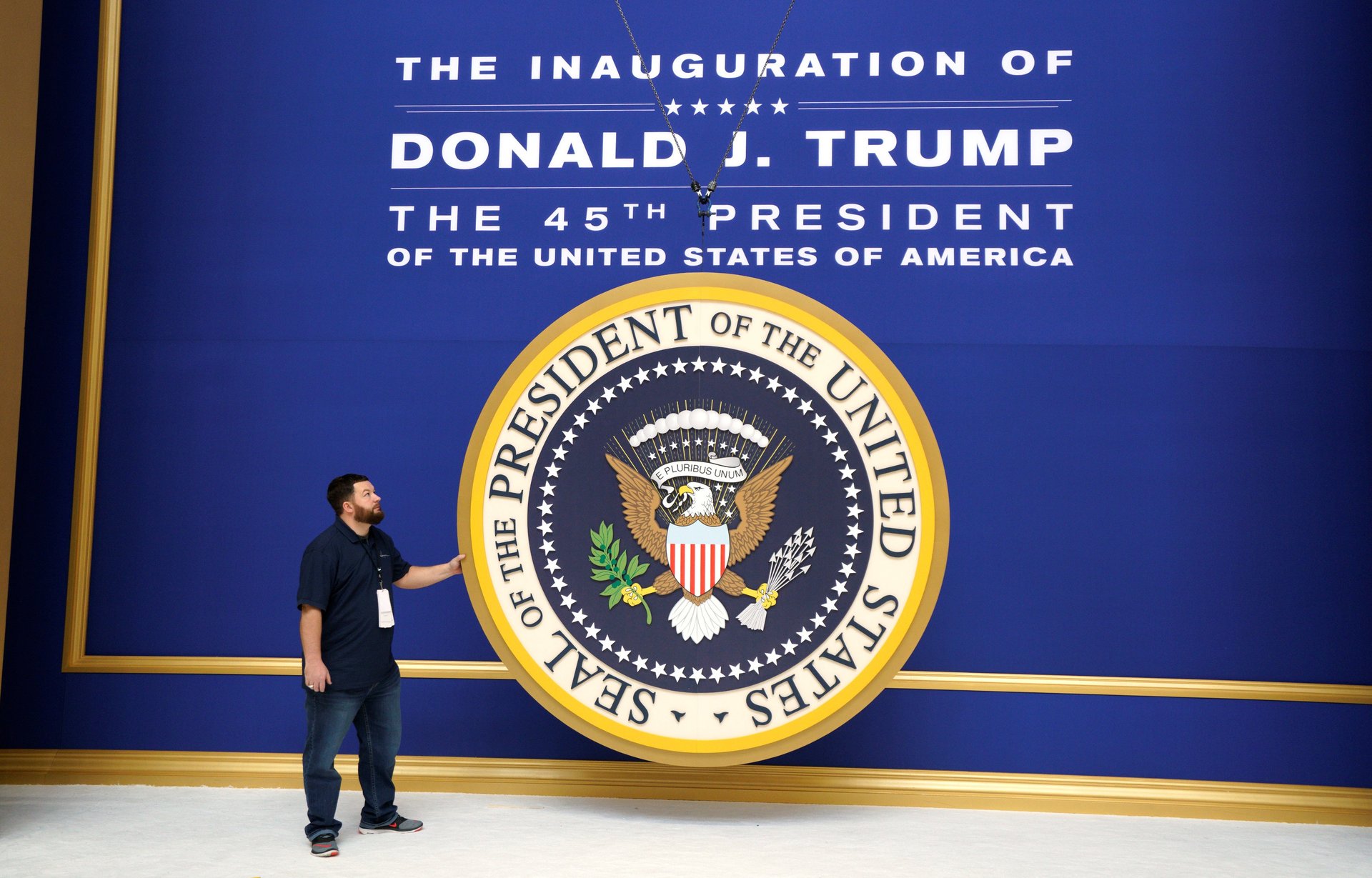
Even the eagle on the presidential seal, displayed front and center in the podium and on commemorative knick knacks recalls the Grossdeutschland eagle of the Nazis. Earlier this month, house speaker Paul Ryan was criticized for his own logo’s resemblance to the Nazi symbol. But the eagle with outstretched wings had been the central design motif of his office’s official seal for years, and there are only so many ways you can draw an eagle.
The fascio littorio or fasces—a bundle of weapons typically drawn with an axe in the center—is another traditionally fascist symbol that has also creeped to the center stage of many American political pageants. A motif from ancient Rome, Italian dictator Benito Musolollini propagated it as a state symbol to remind everyone of his might. But fasci also flank the American flag in the US House of Representatives where Trump will deliver his state of the union addresses. A ring of fasci also surrounds the statue on the top of the US Capitol and appears in decor of the Oval office, the seal of the National Guard, the façade of the US Supreme Court building and on back of a ten-cent coin.
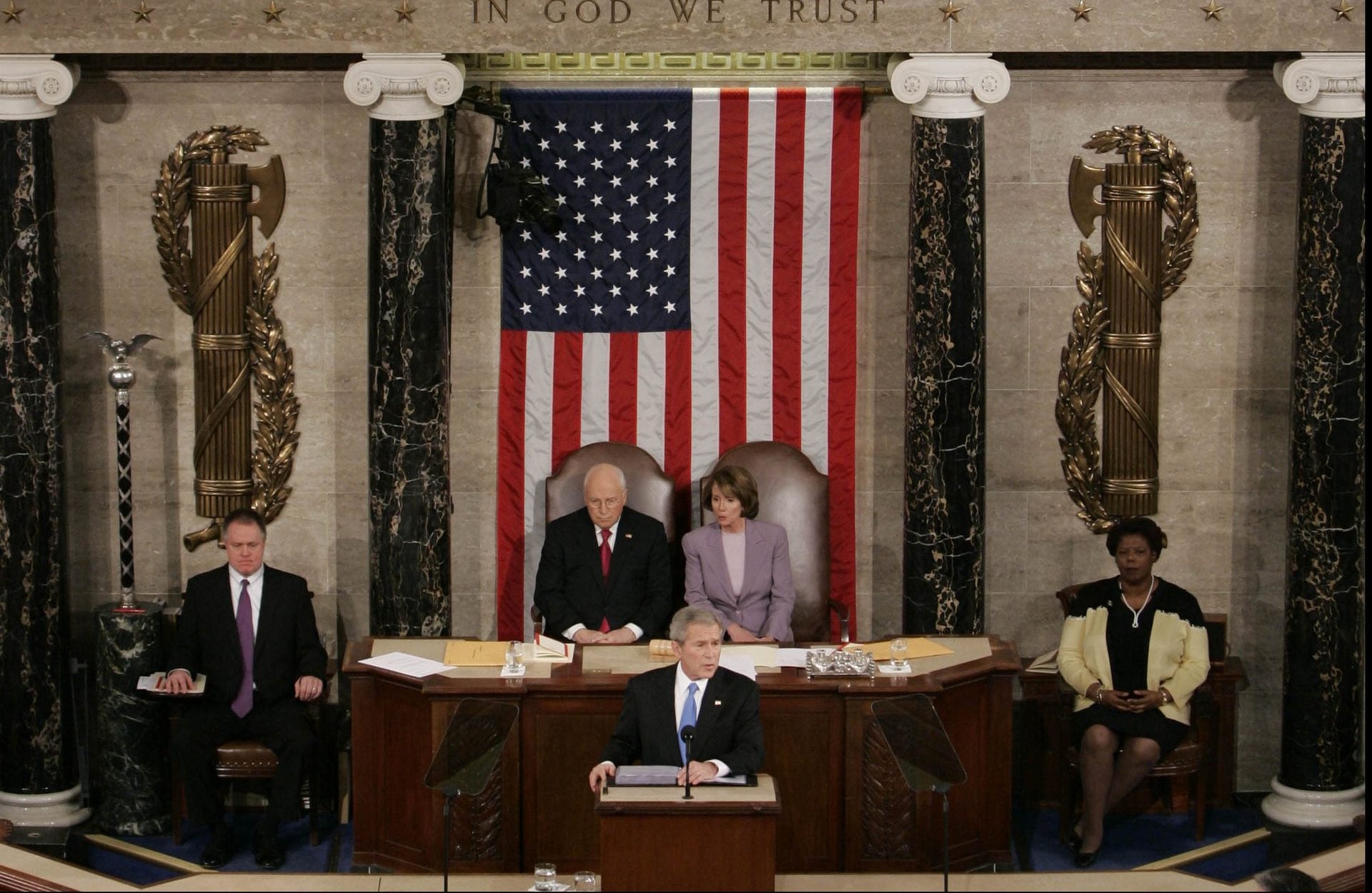
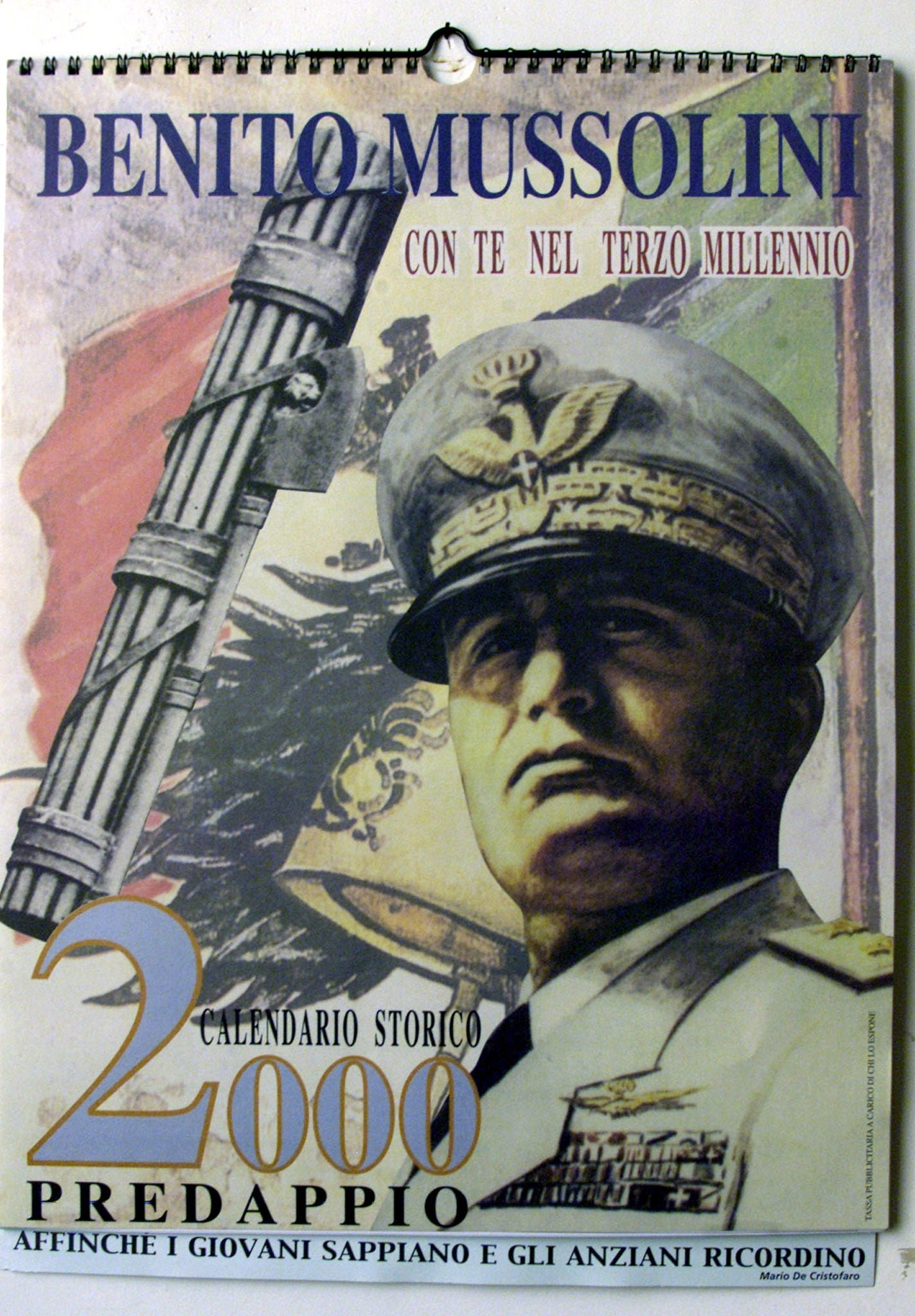
Mass formations
Fascist political pageantry featured highly choreographed demonstrations of the masses such as marching parades and torchlight processions. Rows and lines of entertainers dressed in identical costumes at the 2017 presidential inaugurations are likely to evoke the tight formations of Nazi ceremonies. The term for this is “mass ornament,” originally coined by German sociologist Siegfried Kracauer to describe the Tiller Girls, a British dance troupe that performed in stadiums in the 1920’s, as Fiss mentions in her book. Kracauer also used the term to describe the “seductive, repetitive quality” of Hitler’s rallies.
Today’s Tiller Girls may be the Inauguration Day regulars Radio City Rockettes (though some dancers wanted to opt out); the Mormon Tabernacle Choir (though one singer refused to perform); and the marching bands who dress identically and shimmy in formation.
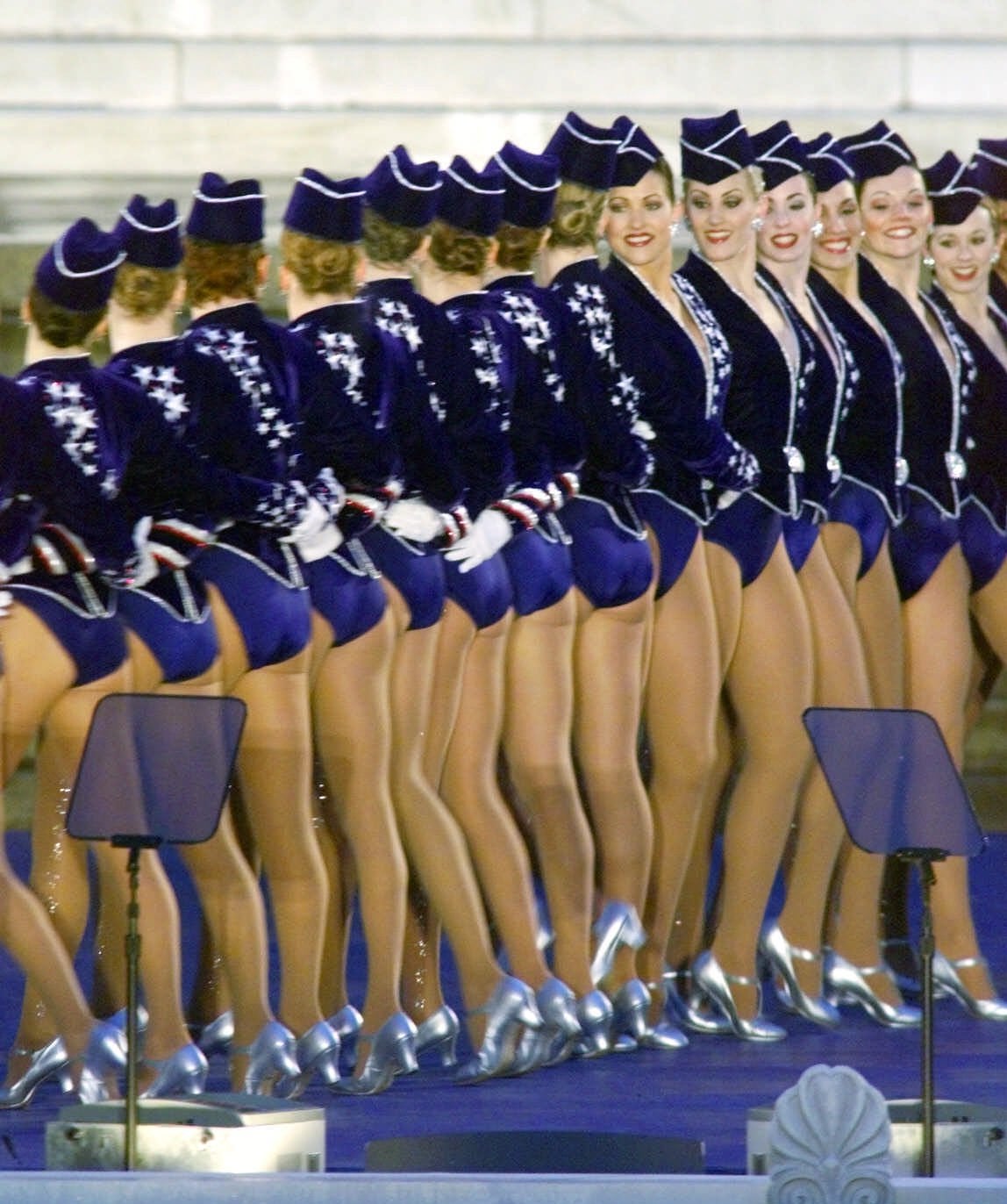
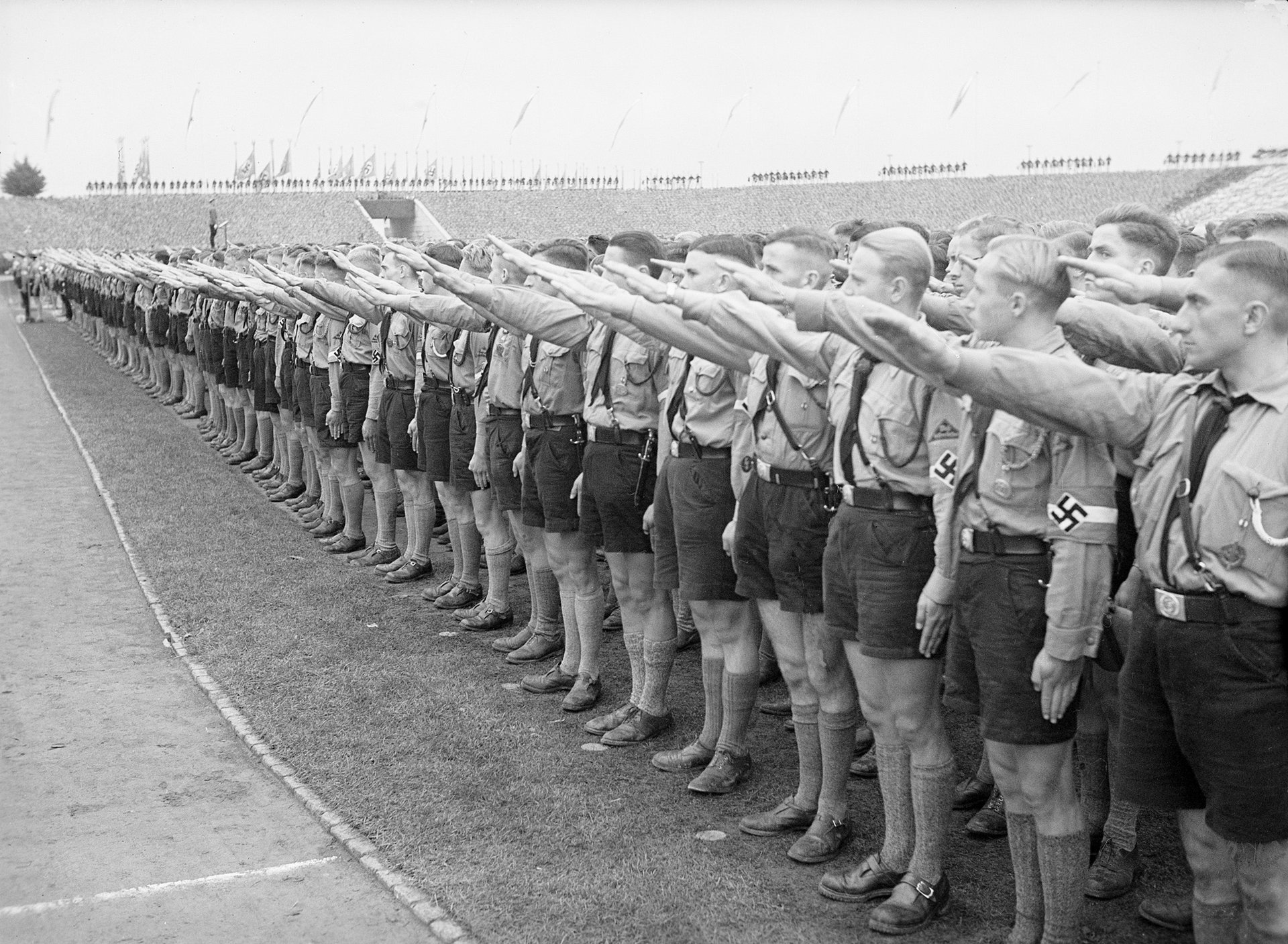
So if the aesthetics for past presidential inaugurations have been essentially the same since Andrew Jackson, why does the gestalt effect of Trump on the “nation’s stage” still register as fascist? While Trump broke protocol in his theatrical press conference, today he’s being sworn into office following a long-held script specified by the 20th Amendment of the US Constitution.
The terms of the President and Vice President shall end at noon on the 20th day of January, and the terms of Senators and Representatives at noon on the 3d day of January, of the years in which such terms would have ended if this article had not been ratified; and the terms of their successors shall then begin.
Despite today’s ceremony’s theme, “Uniquely American,” there’s nothing really new in the fascist fashioning of the peaceful transition of power in the US.